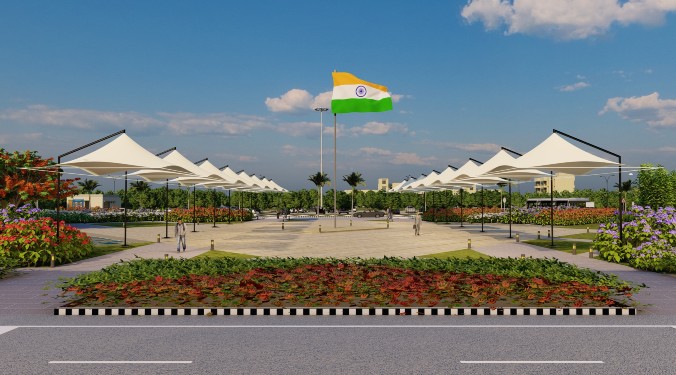“All of our coating systems are durable, high performer, and non-toxic,” says George C. Keefe, President and CEO, GLOBAL Encasement Inc.
GLOBAL Encasement Inc. is a global manufacturer of high-quality, non-toxic protective green coatings for renewable as well as sustainable waterproofing, roofing and most interior and exterior building surfaces. Its products are also engineered, tested and approved to manage-in-place toxic and hazardous building materials. In an exclusive interview with ACE Update, George C. Keefe, President and CEO, GLOBAL Encasement Inc., shares why green coating is not merely a temporary fix.
What are the requirements for green coatings?You want to ensure that the green coatings you will use to manage in-place toxic and hazardous building materials are in fact tested and approved for such use. First of all, the coating should be tested and approved for application over lead-based paint and asbestos. If you put on coatings that are not tested and approved for in-place management, you run the risk of exposing the inhabitants to the toxic and hazardous materials you intended to protect them from.
Second, you don’t want a temporary fix. You’re looking for something that is guaranteed and tested to last for 20 years. Third, it is important that the products are approved for exterior application. Most products don’t last for 20 years when applied on the exterior of a property. You want a green coating system which is weatherproof, waterproof, impact and abuse resistant, and highly flexible so that it does not release fibres and dust of toxic and hazardous materials in the air. Most importantly, all its testing and approvals should be done by independent third parties.
Can you comment on the hazardous impact of paint having lead content with Volatile Organic Chemicals (VOC)?Lead is highly toxic and interferes with several body processes, such as the nervous and reproductive systems, heart, intestines, kidneys, and bones. Lead-based paint (LBP) is highly dangerous, especially to pregnant women, children, undernourished and the elderly. Children, especially babies even before they are born, absorb more lead, and their brains and nervous systems are more susceptible to its damaging effects. If not detected early, children with high blood lead levels can suffer from severe long-term health issues.
Among the methods of poisoning, lead dust is among the greatest threats due to its subtle method of ingestion. During renovations, lead dust can form when lead-based paint is dry scraped, dry sanded, or heated. Dust also forms when painted surfaces bump or rub against. Lead chips and lead dust can get on surfaces and objects we interact with daily. Settled lead dust can re-enter the air when we vacuum, sweep or walk through it.
Children tend to obtain lead poisoning from eating paint chips, from putting their hands or other objects covered with lead dust in their mouths and by inhaling lead dust, especially during renovations that disturb painted surfaces where household dust can pick up lead from deteriorating lead-based paint.
VOCs, on the other hand, can cause chronic and acute health effects at high concentrations, and some are known carcinogens. Even low-to-moderate levels of VOCs may produce acute reactions in some individuals. Some of the immediate symptoms are visual disorders, memory impairment, respiratory tract irritation, headaches, and dizziness. Now, VOCs are emitted from several items we use regularly, but studies found that certain activities like painting can raise that to 1,000 times higher. Hence, when you’re using lead-based paint with high VOC content, you’re really jeopardizing the health of the property inhabitants.
Does hazardous materials removal result into cost savings?No, the complete removal of hazardous building materials can be a costly process. Not only you have to worry about the cost of downtime and relocation but also for the cost of transporting and disposing the hazardous materials. On the other hand, in-place management of these materials can be done with minimal or no downtime, no transportation, and disposal costs and can protect the property inhabitants from the adverse health effects of the hazardous materials.
What are the solutions you offer in protective coating systems?Very often there are materials used in buildings such as asbestos, lead-based paints, heavy metals, etc. They are useful and not a problem when intact and properly maintained. When a natural disaster strikes or due to wear and tear, they are unavoidably released into the environment, becoming airborne.
We provide a multitude of coating systems that are designed on a case-by-case basis for specific client situations. It is not a one-size fits all solution. We have systems made for asbestos containing materials, lead-based paint, mildew and mould abatement, roofing, weatherproofing, waterproofing, containment from secondary exposure (as in the case of a natural disaster), and historical preservation.
All of our coating systems are durable, high performer, and non-toxic. They also contain zero VOCs, making them safer and more cost-effective than other regular coating materials.
What are your future plans to strengthen Global Encasement in Indian market?Global Encasement Inc. is looking at promoting all its products through its local distributors in the Indian market as we know that there is a demand for quality green products in this market. Once people are aware of the benefits of GEI’s green coating systems and how they can ensure safety and sustainability of buildings, communities, people, and planet, they are sure to choose a safe environment for their family and to ensure the well-being their families and children for generations to come with GEI’s green products.
Currently, we are working with our Indian distributors and will make all our products available in the market by the end of this year.
Can you brief us about your new project in Nasik?GlaxoSmithKline, a large multinational pharmaceutical company, called in to inquire about our products. They were looking to encapsulate asbestos-containing roofs and ceilings to prevent leaking or exposure for which we coordinated with their engineering team, external consultants and internal review process. After reviewing our coating system, it was agreed to have a trial on one of their smaller facilities as a pilot project. We completed this in the beginning of the year and they were satisfied with the result and the overall process of application. The benefits were our products sealed in the asbestos, stop the water leaks, and turn the roofs solar reflective which will save them considerable costs in energy as well as over removal, disposal and replacement. Also, there’s no downtime when applying our system, which means they save even more since they don’t have to worry about relocation fees and lost production revenues as some of their facilities operate 24/7.
Cookie Consent
We use cookies to personalize your experience. By continuing to visit this website you agree to our Terms & Conditions, Privacy Policy and Cookie Policy.









